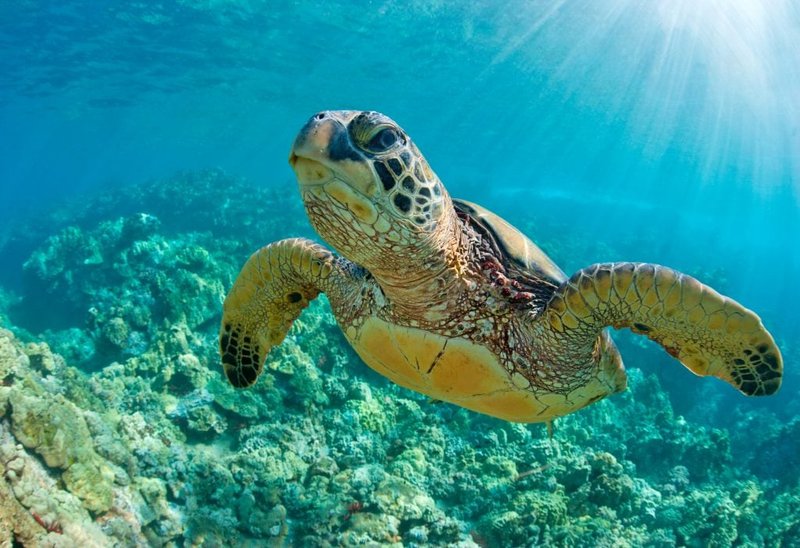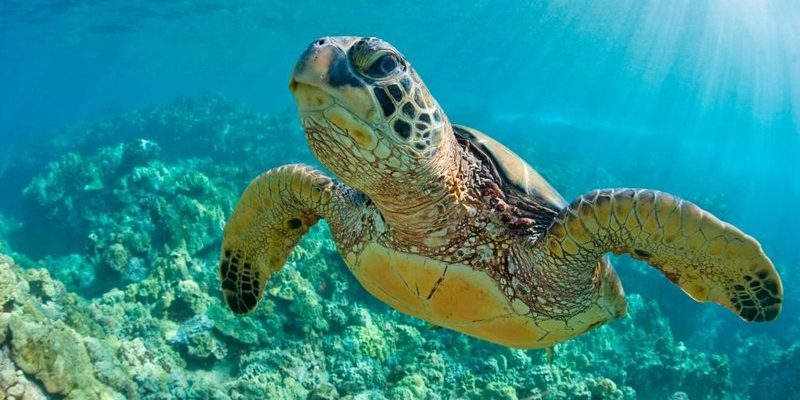
Green sea turtles, known scientifically as *Chelonia mydas*, are not just beautiful; they are incredibly skilled navigators and communicators. They embark on long migrations, often traveling thousands of miles to get to their nesting sites. How do they find their way? And how do they interact with each other underwater? Grab a cup of coffee, and let’s explore the remarkable navigation and communication strategies of green sea turtles!
The Amazing Sense of Direction
You might be wondering how green sea turtles manage to navigate across vast oceanic expanses. It’s like they have an internal compass! Research shows that these turtles possess an incredible ability to detect the Earth’s magnetic fields. Essentially, they can “see” invisible lines of magnetic force. This helps them know where they are and how to get to their destinations, whether that’s a feeding grounds or a nesting beach.
But magnetic fields aren’t their only navigation tool. Green sea turtles also rely on olfactory cues and landmarks. For instance, they can smell their way through various ocean waters, picking up on unique scents that lead them back to familiar areas. Imagine following the smell of your favorite bakery to find your way home! When it comes to finding their nesting sites, they often rely on the sight of the coastline, which guides them back to their chosen beaches year after year.
The Role of Ocean Currents
Ocean currents play a big part in the navigation skills of green sea turtles. These animals are efficient swimmers, and they often take advantage of currents to aid their travel. By positioning themselves within favorable currents, green sea turtles can save energy while still covering long distances. Think of it like riding a bike downhill instead of uphill—it makes the journey much easier!
This ability to harness ocean currents not only helps them reach their destinations but also allows them to explore new feeding areas. If they find a particular current rich in food sources, they can follow it to see what’s on the menu. It’s a bit like discovering a new restaurant that just opened up—an exciting adventure that also satisfies their hunger!
Communication Underwater
When you picture turtles swimming, you might think they’re mostly silent. But here’s the thing: green sea turtles do communicate! While they don’t have vocal cords like us, they use a variety of sounds, body language, and even chemical signals to interact with one another. Imagine chatting with your friends using gestures and facial expressions—it’s a bit like that!
Research indicates that these turtles might grunt, moan, or even hiss, especially during mating rituals. These sounds can carry through the water and help them establish social connections. Just picture a couple of turtles “talking” as they swim together, using their own language to express thoughts or feelings.
Visual Signals
In addition to sounds, green sea turtles communicate with body language. For example, if a turtle wants to assert dominance, it might swim in a certain way that shows off its size or strength. Similarly, during courtship, males may perform specific swimming patterns to woo females. It’s a little like a dance, showcasing their skills and attraction.
You might also see turtles bumping into one another or making contact with their flippers. These subtle interactions can convey a range of messages, from playful greetings to invitations for cooperation. It’s amazing to think that so much communication happens in silence, relying solely on the languages of the ocean.
Why This Matters
Understanding how green sea turtles navigate and communicate is important for their conservation. As we learn more about these magnificent creatures, we can better protect their habitats and ensure they have safe environments to thrive. For instance, if we know they rely on certain currents for migration, we can work on preserving those routes from pollution or development.
Moreover, recognizing their ways of communication can help researchers monitor their populations and health. When scientists can identify stress behaviors or changes in vocalizations, they can gain insights into the overall well-being of the species. It’s all interconnected, and knowing how turtles operate can lead to smarter conservation efforts.
Challenges They Face
Despite their impressive skills, green sea turtles face various threats that can disrupt their navigation and communication. Issues like climate change, pollution, and habitat destruction can impact their natural behaviors. Imagine trying to find your way in a city that’s constantly changing—frustrating, right? That’s what these turtles deal with, and it’s our responsibility to help mitigate those challenges.
The loss of nesting beaches due to rising sea levels or development can hinder their ability to reproduce. Meanwhile, the introduction of noise pollution from boats and industrial activities can drown out their communication signals, making it hard for them to connect with one another. We all need to work together to protect these amazing creatures and their environments.
Supporting Green Sea Turtle Conservation
If you’re inspired by the challenges faced by green sea turtles, you might be wondering what you can do to help. There are several effective ways to support their conservation:
- Reduce Plastic Usage: Cutting down on single-use plastics can help prevent ocean pollution.
- Volunteer: Engage with local conservation efforts, such as beach clean-ups and turtle monitoring programs.
- Educate Others: Share what you’ve learned about these turtles with friends and family to raise awareness.
- Support Sustainable Practices: Choose seafood and products that are sustainably sourced to protect marine life.
By taking these small but meaningful steps, you can contribute to the well-being of green sea turtles and ensure future generations can marvel at their beauty and grace.
The green sea turtle is a remarkable creature that has adapted to navigate and communicate in its ocean home with incredible skill. By using a mix of magnetic navigation, scent cues, body language, and sound, these turtles connect with their environment and each other in ways that are both fascinating and vital to their survival.
As they face increasing challenges, understanding their behaviors can empower us to take action and protect these magnificent animals. Whether it’s through reducing plastic usage, getting involved in local conservation efforts, or simply sharing knowledge with others, we can all play a part in preserving the legacy of the green sea turtle. So the next time you see one, remember: there’s a world of communication and navigation happening beneath the surface!

